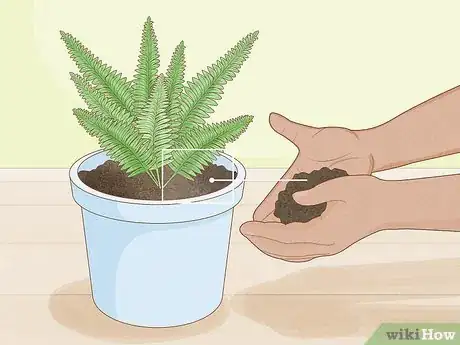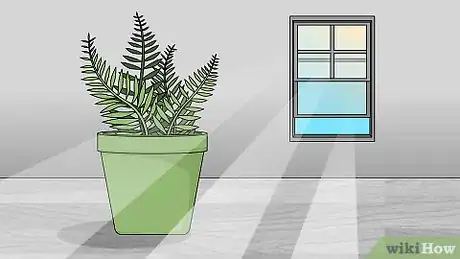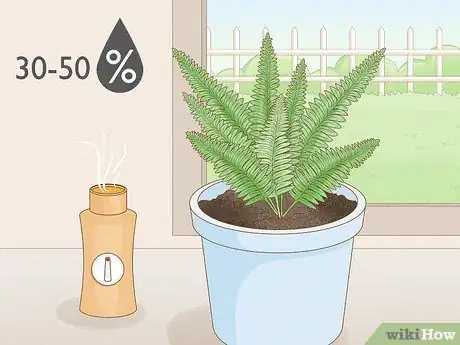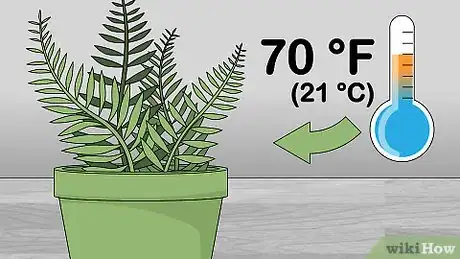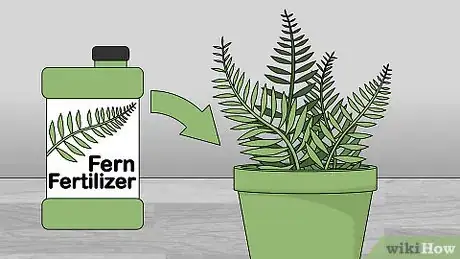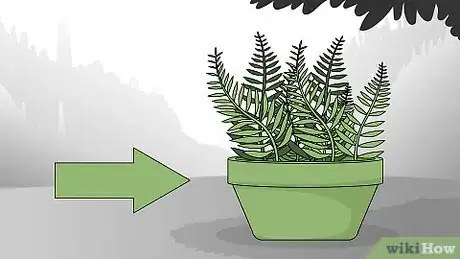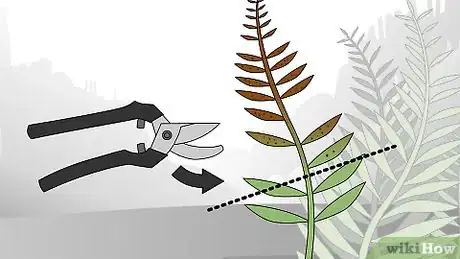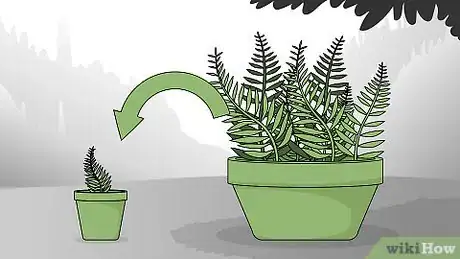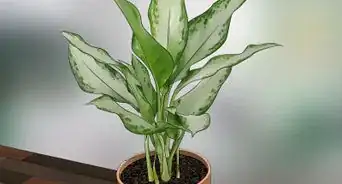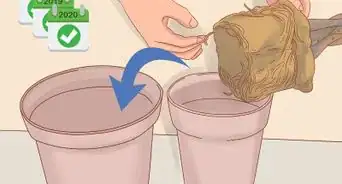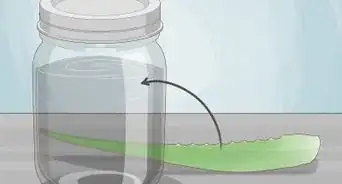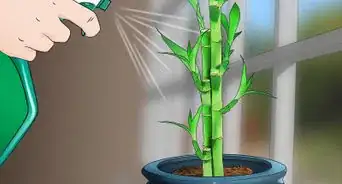This article was co-authored by Artemisia Nursery and by wikiHow staff writer, Hannah Madden. Artemisia Nursery is a retail plant nursery in Northeast Los Angeles specializing in California native plants. Artemisia Nursery is a worker-owned small business with plans to become a worker-owned cooperative. In addition to California native plants, Artemisia Nursery offers a selection of succulents, heirloom veggie and herb starts, house plants, pottery, and gardening tools and supplies. Drawing on the knowledge of the founders, Artemisia Nursery also offers consultations, designs, and installations.
There are 9 references cited in this article, which can be found at the bottom of the page.
wikiHow marks an article as reader-approved once it receives enough positive feedback. This article received 27 testimonials and 92% of readers who voted found it helpful, earning it our reader-approved status.
This article has been viewed 591,708 times.
Taking care of a new plant is never easy, especially if you aren’t familiar with what they need or like the best. Ferns are beautiful, shrubby plants that thrive in warm, moist environments either inside or outside. There are tons of different species of ferns, but they all generally need the same thing: water, warmth, and shade. By putting your fern in the right spot and keeping an eye on it, you can grow your fern to its full potential and keep it around for years to come (seriously—some ferns can live to be 100 years old!).
Steps
Caring for Indoor Ferns
-
1Pot ferns in porous soil with a drainage system. When you’re choosing a pot for your indoor ferns, pick out a clay or ceramic pot with a hole in the bottom for drainage. Fill the pot up halfway with porous potting soil, then cover the roots of the fern with more soil. Make sure you leave all of the leaves, or fronds, up above the potting soil so your fern can thrive.[1]
- You can find a porous potting soil mix at most garden supply stores. Generally, that just means it has compost or manure in it to create air pockets.
- The amount of soil you need depends on the size of the pot you choose. It’s better to start with a large pot so you don’t have to replant your fern too often.
- You can also pot a fern in a hanging basket.
-
2Place your fern in an area that gets indirect light. Pick a spot in your home that doesn’t get a lot of direct sunlight throughout the day, but keep it near a window so it can still soak up the sun’s rays (usually, a north-facing window is best). Keep the plant a bit away from the window so it doesn’t get too hot.[2]
- If you notice the leaves of your fern getting brown or crispy, it’s probably getting too much sun. Try moving it to a different area or keeping it away from the window for a while.
Advertisement -
3Set up a humidifier near your fern. Ferns prefer high moisture levels in the air, since that’s what they’re used to. Plug in a humidifier and keep it next to your fern to keep it moist and happy, and aim for anywhere between 30% to 50% humidity in the room (ferns in the wild do well in humidity around 70%, but that may not be possible indoors).[3]
- While misting your fern with water is sometimes suggested as a way to keep them moisturized, using a humidifier is easier and works a lot better.
-
4Keep the temperature between 60 and 72 °F (16 and 22 °C). Most indoor species of ferns are tropical, although not all require tropical weather. Make sure that the temperature in your home (or at least the room in which the fern is kept) is near 70 °F (21 °C) during the day and below 60 °F (16 °C) at night. Ferns won’t thrive as well under low-temperature conditions, so if you’re ever in doubt, turn the temperature up.[4]
- Consider placing your fern by a window in the bathroom so it can stay both warm and humid without a ton of effort.
-
5Water your fern when the surface of the soil feels dry. Ferns love a humid atmosphere, but they also prefer moist soil as well. Make sure that the top of the soil is always damp (but never soaking). Water the plant thoroughly to make sure the soil gets wet and the water can reach the roots.[5]
- Always use lukewarm or room temperature water, not cold. Cold water can shock the roots of your fern since they’re used to a warm, tropical environment.
- If you live in a dry environment, put the pot in a saucer filled with rocks and water, and mist your plant regularly. That will help create a little extra humidity for the fern.[6]
-
6Add liquid fertilizer once a month from April to September. Ferns don’t need to be fertilized often, and they can actually die if you fertilize them too much. Dilute a liquid houseplant fertilizer to about half-strength with water, then pour it into the potting soil mix once a month during the growing season.[7]
- Houseplant fertilizer is rich in nitrogen, potassium, and phosphorus, which is what your fern needs to flourish.
- You can also use fish emulsion instead of fertilizer.
-
7Remove dead parts of the fern. House ferns are able to contract some diseases, but they tend to be hardy and don’t succumb to most. If your plant looks brown or dead, cut off the damaged areas with hand pruners. If your fern begins to die as a result of neglect, do the same by removing the damaged/dead area with a pair of shears. If your whole plant appears brown and crispy, it is best to remove it before it spreads to other house plants.[8]
- You’ll notice your fern fronds are starting to die if they turn brown or curl up.
-
8Transplant the fern every few years. Every 1 to 2 years, choose a new pot that’s larger than the old one your fern was in originally. Tip the pot over and tap it on a hard surface to carefully dislodge your fern, then plant it right away with new potting soil.[9]
- Different ferns grow at different speeds. Generally, new ferns will need to be repotted after 6 months to a year.
Caring for Outdoor Ferns
-
1Plant the ferns in full to partial shade. Ferns thrive in shady environments where they get just enough sunlight through the trees. If you’re planting ferns in your yard, look for a space that stays pretty shady throughout the day so your fern doesn’t fry.[10]
- If your ferns are already growing in your yard, you probably don’t need to move them.
- Ferns are great plants to plant on a slope to help aid in soil erosion prevention. Their roots reach down deep into the soil, and they can live for decades, so they’ll be around for a long time.
-
2Water your ferns once or twice a week if it isn’t raining. Ferns need regular moisture, and they can get it on their own if you live in a wet climate. However, if your ferns aren’t getting any rainfall, water them once or twice a week to keep them healthy. Point the water stream at the roots, not the fronds, to avoid damaging the plant.[11]
- If you live in a temperate or tropical rainforest, the ferns will probably be fine on their own.
-
3Cut back damaged fronds. Ferns don’t have many natural predators outdoors, other than slugs and one or two rare diseases. If, however, you notice that your fern has damaged or diseased fronds, use a pair of gardening shears to cut them back. This will keep the integrity of the rest of the plant, and if it is a disease, prevent it from spreading to other plants.[12]
-
4Split the ferns if you’d like new ferns elsewhere. Ferns can get quite large over time. To divide a large fern into several smaller ferns, dig out the plant and its roots. Carefully grab a chunk of roots and fronds that separate naturally from the fern itself. Then, replant each of these sections in a new area far away from each other in your yard to give them enough room to thrive.[13]
- The best time to split and transplant outdoor ferns is after the first frost (typically in October or November.)
Expert Q&A
-
QuestionWhy do my ferns look like something is growing underneath?
 Katie GohmannKatherine Gohmann is a Professional Gardener in Texas. She has been a home gardener and professional gardener since 2008.
Katie GohmannKatherine Gohmann is a Professional Gardener in Texas. She has been a home gardener and professional gardener since 2008.
Professional Gardener Some ferns spread via rhizomes, which are horizontal roots that grow continuously. This might be what you're seeing.
Some ferns spread via rhizomes, which are horizontal roots that grow continuously. This might be what you're seeing. -
QuestionDo mosquitoes hurt ferns?
 Katie GohmannKatherine Gohmann is a Professional Gardener in Texas. She has been a home gardener and professional gardener since 2008.
Katie GohmannKatherine Gohmann is a Professional Gardener in Texas. She has been a home gardener and professional gardener since 2008.
Professional Gardener No, mosquitoes do not cause any harm to ferns.
No, mosquitoes do not cause any harm to ferns. -
QuestionIf I planted ferns outside in the southern United states, will they come back in the spring, or should I bring them inside during the winter?
 Katie GohmannKatherine Gohmann is a Professional Gardener in Texas. She has been a home gardener and professional gardener since 2008.
Katie GohmannKatherine Gohmann is a Professional Gardener in Texas. She has been a home gardener and professional gardener since 2008.
Professional Gardener Whether you should keep them outside or inside depends how cold your area gets. If it gets below 60 degrees Fahrenheit (15.5 degrees Celsius), bring them in, unless you have specifically checked on your type of fern's hardiness. Ferns generally do well as indoor plants.
Whether you should keep them outside or inside depends how cold your area gets. If it gets below 60 degrees Fahrenheit (15.5 degrees Celsius), bring them in, unless you have specifically checked on your type of fern's hardiness. Ferns generally do well as indoor plants.
Warnings
- Direct or constant sunlight can cause fern fronds to shrivel and/or turn brown.⧼thumbs_response⧽
- Keep indoor ferns away from air-conditioning vents or other potentially drying elements.⧼thumbs_response⧽
- Scales, mealybugs and mites all tend to try to live in ferns. Pesticides are not recommended for use with ferns, so shaking or handpicking the bugs off will be the best route for removal.⧼thumbs_response⧽
Things You'll Need
- Fern
- Potting or outdoor soil
- Watering Can
- Spray bottle
- Pot (if being cared for indoors)
- Plant Fertilizer
- Thermometer
- Moss, mulch, and/or gravel
- Shovel
References
- ↑ https://extension.umn.edu/houseplants/tropical-ferns
- ↑ http://www.uvm.edu/pss/ppp/articles/fernsin.html
- ↑ http://www.uvm.edu/pss/ppp/articles/fernsin.html
- ↑ https://extension.uga.edu/publications/detail.html?number=B737&title=Growing%20Ferns#Temperature
- ↑ https://extension.umn.edu/houseplants/tropical-ferns#watering-1425561
- ↑ Artemisia Nursery. Plant Nursery & Garden Shop. Expert Interview. 7 August 2020.
- ↑ http://www.uvm.edu/pss/ppp/articles/fernsin.html
- ↑ https://extension.uga.edu/publications/detail.html?number=B737&title=Growing%20Ferns#Groom
- ↑ http://www.uvm.edu/pss/ppp/articles/fernsin.html
- ↑ https://www.missouribotanicalgarden.org/PlantFinder/PlantFinderDetails.aspx?kempercode=a710
- ↑ https://extension.uga.edu/publications/detail.html?number=B737&title=Growing%20Ferns#Water
- ↑ https://extension.uga.edu/publications/detail.html?number=B737&title=Growing%20Ferns#Landscape
- ↑ https://extension.uga.edu/publications/detail.html?number=B737&title=Growing%20Ferns#Landscape
- ↑ Artemisia Nursery. Plant Nursery & Garden Shop. Expert Interview. 7 August 2020.
About This Article
To care for house-ferns, keep them in a shady area that gets plenty of indirect sunlight and make sure the soil around them stays moist at all times. Ferns prefer lots of humidity and temperatures around 70 °F, so try to keep the temperature and humidity levels consistent if you're growing your plants indoors. Fertilize your ferns every month to encourage new growth, and prune away any damaged or diseased fronds that develop over time. Consider transplanting or splitting your ferns if they grow too large for their location! For more tips from our Horticulturist reviewer, including how to care for outdoor ferns, read on!
